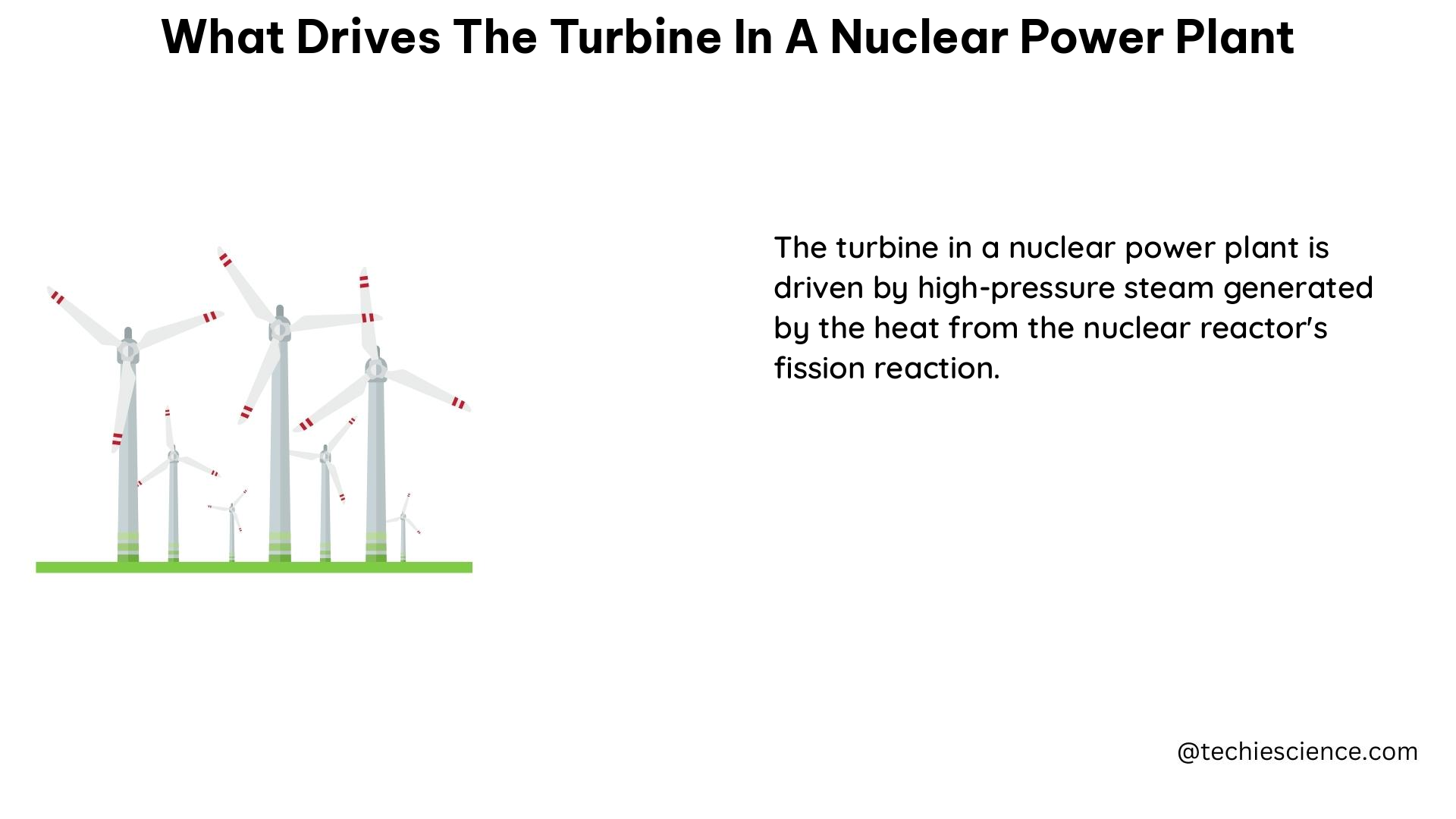In a nuclear power plant, the turbine is driven by high-pressure steam that is generated by heating water using the thermal energy produced by the nuclear reactor. This steam turbine converts the thermal energy into mechanical energy, which is then used to generate electricity. The amount of electricity generated by a nuclear power plant depends on its electricity generation capacity and the operating time of the individual generators.
Understanding the Nuclear Reactor and Steam Generation
The heart of a nuclear power plant is the nuclear reactor, where the process of nuclear fission takes place. In this process, the nuclei of heavy atoms, such as uranium or plutonium, are split, releasing a large amount of thermal energy. This thermal energy is used to heat water, which is then converted into high-pressure steam.
- The nuclear reactor core typically contains fuel assemblies made of uranium or plutonium oxide pellets, encased in metal rods.
- The fuel rods are submerged in a coolant, usually water, which absorbs the heat generated by the nuclear fission process.
- The heated coolant is then circulated through a heat exchanger, where it transfers its thermal energy to a secondary water loop, converting it into high-pressure steam.
The Steam Turbine and Electricity Generation

The high-pressure steam generated in the nuclear reactor is then directed to the steam turbine, which is the primary component that drives the electricity generation process.
- The steam turbine is a rotary mechanical device that converts the thermal energy of the steam into mechanical energy.
- As the high-pressure steam flows through the turbine blades, it causes the turbine shaft to spin at a high rate of speed, typically between 1,500 and 3,600 revolutions per minute (rpm).
- The spinning turbine shaft is connected to an electrical generator, which converts the mechanical energy into electrical energy.
Turbine Generator Set and Electricity Output
The turbine generator set in a nuclear power plant is designed to produce a significant amount of electricity, typically ranging from 500 to 1,600 megawatts (MW) of electrical power.
| Turbine Generator Set Specifications | Typical Values |
|---|---|
| Electrical Power Output | 500 to 1,600 MW |
| Turbine Shaft Speed | 1,500 to 3,600 rpm |
| Steam Inlet Pressure | 5 to 7 MPa (50 to 70 bar) |
| Steam Inlet Temperature | 260 to 290°C |
- The turbine generator set consists of the steam turbine, the electrical generator, and associated equipment, such as the exciter, transformer, and cooling systems.
- The steam turbine is directly coupled to the electrical generator, which converts the mechanical energy of the spinning turbine shaft into electrical energy.
- The electrical output of the generator is then stepped up to a higher voltage and transmitted to the electrical grid for distribution.
Factors Affecting Electricity Generation
The amount of electricity generated by a nuclear power plant depends on several factors, including the plant’s electricity generation capacity and the operating time of the individual generators.
- Electricity Generation Capacity: A nuclear power plant with a single generator that has a capacity of 100 MW, operating continuously for 24 hours, can generate 2,400 MWh of electricity.
- Capacity Factor: Nuclear power plants typically have high capacity factors, meaning they operate at or near their rated electricity generating capacity throughout the year to provide base-load electricity generation.
- Thermal Efficiency: Nuclear power plants have a higher thermal efficiency compared to fossil fuel power plants, meaning they can convert a larger percentage of the heat generated by the reactor into electricity.
Conclusion
The turbine in a nuclear power plant is driven by high-pressure steam generated by heating water using the thermal energy produced by the nuclear reactor. This steam turbine converts the thermal energy into mechanical energy, which is then used to generate a significant amount of electricity, typically ranging from 500 to 1,600 MW. The efficiency and electricity generation capacity of nuclear power plants make them an important source of base-load electricity in many countries around the world.
References:
– U.S. Energy Information Administration, “How much electricity does a power plant generate?”, https://www.eia.gov/tools/faqs/faq.php?id=104&t=3
– Scientific American, “Nuclear Energy Primer”, https://www.scientificamerican.com/article/nuclear-energy-primer/
– International Atomic Energy Agency, “Nuclear Power Plant Design Characteristics”, https://www-pub.iaea.org/mtcd/publications/pdf/te_1544_web.pdf
– ScienceDirect, “Nuclear Power Plant”, https://www.sciencedirect.com/topics/chemistry/nuclear-power-plant
– World Nuclear Association, “Nuclear Power Plants and Earthquakes”, https://world-nuclear.org/information-library/safety-and-security/safety-of-plants/nuclear-power-plants-and-earthquakes.aspx

The lambdageeks.com Core SME Team is a group of experienced subject matter experts from diverse scientific and technical fields including Physics, Chemistry, Technology,Electronics & Electrical Engineering, Automotive, Mechanical Engineering. Our team collaborates to create high-quality, well-researched articles on a wide range of science and technology topics for the lambdageeks.com website.
All Our Senior SME are having more than 7 Years of experience in the respective fields . They are either Working Industry Professionals or assocaited With different Universities. Refer Our Authors Page to get to know About our Core SMEs.